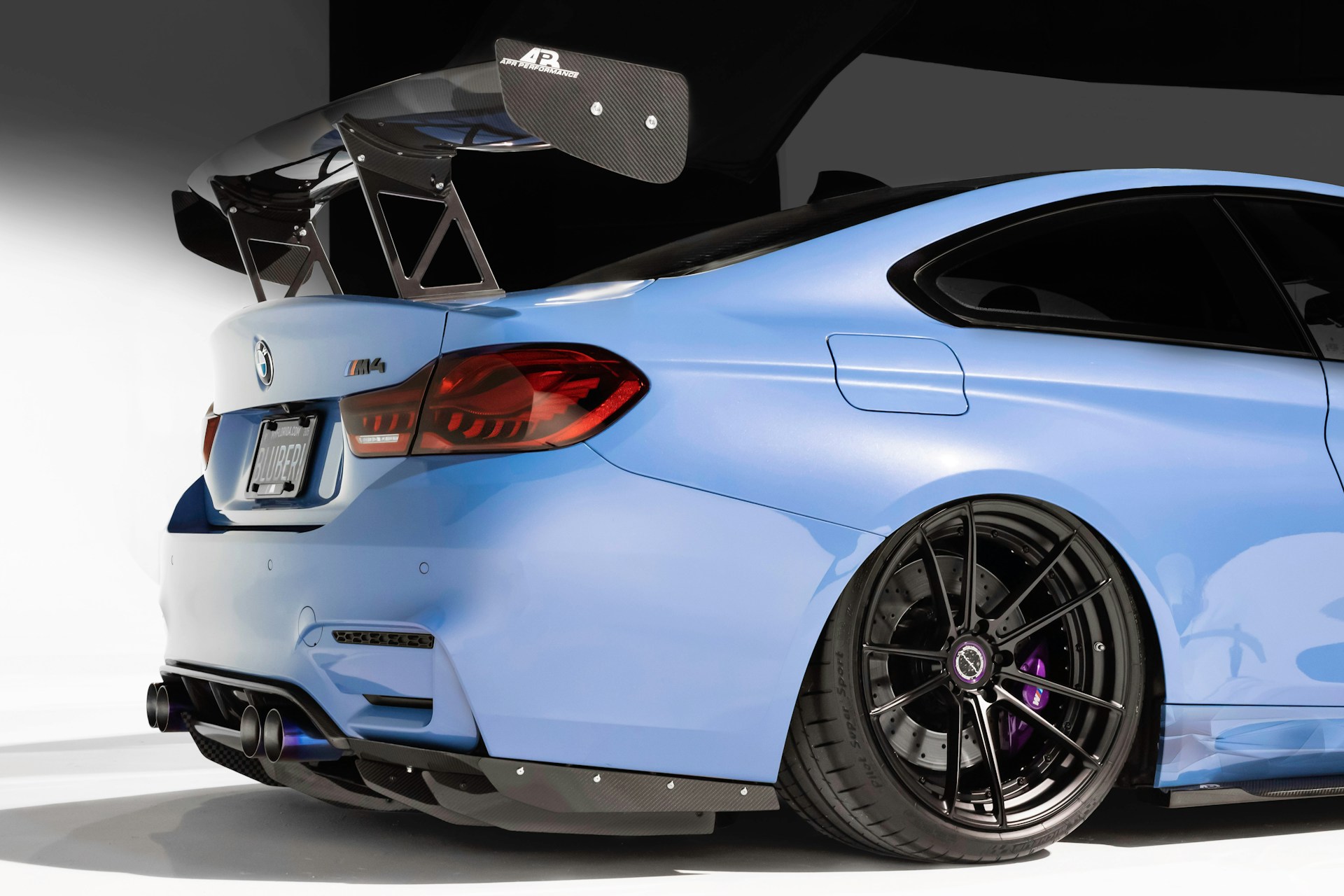Your cart is currently empty!

Rear Spoiler: When It Is Necessary and When Not
Understanding Rear Spoilers
A rear spoiler is an aerodynamic device designed to manage airflow, reduce drag, and increase downforce, thereby improving stability and handling at high speeds. Spoilers are typically found on sports cars and performance vehicles, but they also appear on sedans and even some SUVs.
Effectiveness of Rear Spoilers
- Increased Downforce:
- Function: Rear spoilers create downforce by directing airflow upwards, pressing the rear of the vehicle down onto the road.
- Benefit: This increases traction, especially during high-speed cornering, providing better control and stability.
- Reduction of Lift:
- Function: Spoilers counteract lift by disrupting the airflow over the vehicle, which otherwise tends to lift the car off the ground at high speeds.
- Benefit: Improved contact between tires and road surface, enhancing safety and performance.
- Aerodynamic Efficiency:
- Function: By smoothing out the airflow over the vehicle’s body, spoilers reduce aerodynamic drag.
- Benefit: This can lead to improved fuel efficiency and higher top speeds.
When a Rear Spoiler Is Necessary
- High-Performance Driving:
- Scenario: Vehicles frequently driven at high speeds or used in motorsports.
- Reason: Enhanced stability, control, and performance are critical in these conditions.
- Sport-Tuned Vehicles:
- Scenario: Cars designed for dynamic driving and spirited performance.
- Reason: The added downforce and improved aerodynamics complement the vehicle’s performance characteristics.
- Aesthetic Appeal:
- Scenario: Owners looking to enhance the sporty look of their car.
- Reason: While not necessarily functional, spoilers can add a visual appeal that aligns with the car’s design ethos.
When a Rear Spoiler Is Not Necessary
- Everyday Driving:
- Scenario: Regular commuter vehicles used primarily for city and highway driving at moderate speeds.
- Reason: The benefits of a spoiler are negligible at lower speeds, where downforce and aerodynamic efficiency are less critical.
- Non-Performance Vehicles:
- Scenario: Family sedans, minivans, and other non-sporting vehicles.
- Reason: These vehicles are not designed for high-speed handling, so the aerodynamic benefits of a spoiler are minimal.
Specifics of Installation
- Choosing the Right Spoiler:
- Compatibility: Ensure the spoiler is designed for your specific vehicle model.
- Material: Common materials include fiberglass, ABS plastic, and carbon fiber, each offering different benefits in terms of weight, durability, and cost.
- Professional Installation:
- Precision: Proper alignment and secure mounting are crucial for the spoiler to function correctly.
- Tools and Skills: Professional installation ensures the use of appropriate tools and techniques, avoiding damage to the vehicle’s body.
- DIY Installation:
- Preparation: Thoroughly clean the mounting area and gather all necessary tools and materials.
- Instructions: Follow the manufacturer’s instructions meticulously to ensure correct placement and secure attachment.
Maintenance Tips
- Regular Cleaning:
- Method: Use mild soap and water to clean the spoiler, avoiding abrasive materials that could scratch the surface.
- Frequency: Clean regularly to prevent buildup of dirt and grime.
- Inspection:
- Check for Damage: Regularly inspect the spoiler for cracks, chips, or loose mounting hardware.
- Repair Promptly: Address any damage immediately to prevent it from worsening and affecting the spoiler’s functionality.
- Protective Coatings:
- Application: Apply a protective wax or sealant to carbon fiber or painted spoilers to preserve their finish.
- Benefit: Helps to prevent UV damage and maintains the aesthetic appeal.
Conclusion
Rear spoilers can significantly enhance a vehicle’s performance and aesthetics when used appropriately. While essential for high-performance and sport-tuned vehicles, they offer limited benefits for everyday commuter cars. Proper installation and regular maintenance are key to ensuring that a rear spoiler functions correctly and remains in good condition.
For more information on automotive parts and customization, visit GDO Automotive Customization and Performance Center.